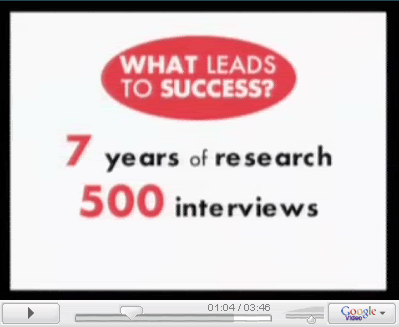Researchers at Boston University Medical School studied films of people having conversations. The researchers noticed that the people talking began (unconsciously) to co-ordinate their movements (including finger movements, eye blinks and head nods.) When they were monitored using electroencepholographs, it was found that some of their brain waves were spiking at the same moment. As the conversations progressed, these people were getting into rapport with each other.
The phenomenon of rapport is well-known in the world as a starting-point for influential communication. It’s mentioned in countless influence texts, and crops up in most sales training programs. Yet what ‘is’ rapport, and how can you use it to help yourself and others?
What is rapport?
Rapport has been described as what happens when we get the attention of someone’s unconscious mind, and meet them at their ‘map of the world.’ It is more commonly understood as the sense of ease and connection that develops when you are interacting with someone you trust and feel comfortable with. Rapport emerges when people are in-sync with each other.
Rapport is an emergent property of the system (group), like a fit of the giggles or a pregnant pause. As such, it’s not possible to ‘cause’ or ‘do’ rapport; you can however massively increase the likelihood of rapport emerging when you are communicating with another person.
Mirror, mirror…
On a basic level, we like people who are like us. One way to help rapport to develop is to mirror the micro-behaviours of those we wish to influence. Any observable behaviour can be mirrored, for example:
- Body posture
- Hand gestures
- Head tilt
- Vocal qualities (pace, rhythm, tonality)
- Key phrases
- Blink rate
- Facial expression
- Energy level
- Breathing rate
- Anything else that you can observe…
To mirror another person, merely select the behaviour or quality you wish to mirror, then do that behaviour. If you choose to mirror head tilt, when the person moves their head, wait a few moments, then move yours to the same angle. The effect should be as though the other person is looking in a mirror. When this is done elegantly, it is out of consciousness for the other person. However, a few notes of caution are appropriate:
- Mirroring is not the same as mimicry. It should be subtle and respectful.
- Mirroring can lead to you sharing the other person’s experience. Avoid mirroring people who are in distress or who have severe mental issues.
- Mirroring can build a deep sense of trust quickly. You have a responsibility to use it ethically.
1. Practise mirroring the micro-behaviours of people on television (chat shows & interviews are ideal.) You may be surprised at how quickly you can become comfortable as you subtly mirror the behaviours of others.
Pacing and leading
Pacing and leading is one of the keys to influencing people. It refers to meeting them at their map of the world (pacing) and then taking them where you want them to go (leading.) Rapport is a basic, behavioural signal that you have met someone at their map of the world. The simplest, most effective test for rapport is "if you lead, they follow."
2. Choose a safe situation to practise mirroring an element of someone else’s behaviour. When you have mirrored them for a while, and think you are in rapport with the person, scratch your nose. If they lift their hand to their face within the next minute or so, congratulate yourself – you have led their behaviour!
Skilled communicators have a wide range of behaviours they can mirror to build rapport. You can find a way to mirror virtually anything you can observe.
3. Increase the range of behaviours that you can mirror, and introduce deliberate rapport-building into situations where it will benefit you and others (nb. Use your common sense and choose low-risk situations to practice in.)
Summary
Building rapport through mirroring is a powerful way to build a sense of trust and connection…
1) Practise mirroring the micro-behaviours of people on television (talk shows & interviews are ideal.)
2) Choose a safe situation to practise mirroring an element of someone else’s behaviour.
3) Increase the range of behaviours that you can mirror, and introduce deliberate rapport-building into situations where it will benefit you and others (Use your common sense and choose low-risk situations to practice in.)
Thanks for spending 3 minutes with me...
The best is yet to be!
On Your Team
Jeffrey Stanton
Your Trusted Advisor For Life
One of the fastest ways to build a successful referral based business is by training. Now, with me, I like to invest significant time immersing myself in training, while some people prefer to take it in bite-size chunks. Whatever your preference is, now is the best time to contact me.
If you have found this tip useful, please share it with any friends, family, colleagues and associates who you think will be interested. Feel free to print it (with credit and subscription information) and continue to enjoy the tips. I am always grateful for any comments, criticisms or other feedback that you may have. Please send them to feedback@jeffreysjournal.com


































No comments:
Post a Comment